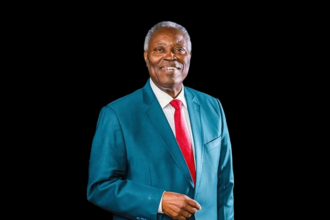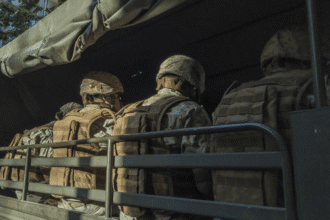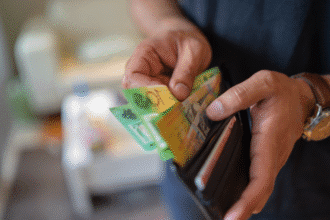On May 3, 2025, Australia is supposed to hold its general election. Emphasizing the importance of the Australian election of 2025 for the future of the country, Prime Minister Anthony Albanese revealed the date from Parliament House. Opinion surveys showing a narrow gap between the two main parties suggest a very fierce competition in the election. To create a majority government with the required 76 members in the House of Representatives, both main parties—the Labor Party and the Liberal-National Coalition—will have to plan strategically.
What primary concerns affect voters?
The campaign is expected to center on cost-of-living issues, including inflation, housing affordability, and healthcare access. Rising rates for electricity, rent, and groceries—among other basic needs—are causing financial difficulty for many Australians. While problems like immigration and crime management are attracting focus in the Australian election of 2025, many voters—especially young Australians—still give climate action a top priority.
A significant electoral debate now revolves around public dissatisfaction with government policy on taxes and energy prices. The Albanese government has tried to implement tiny tax cuts and energy bill relief packages, among other policies meant to solve problems. Critics contend that these programs have not done enough to offset pressures from inflation.
Where are the main parties positioned?
Promising policies, including more free healthcare, lower student debt, and minor tax cuts, Prime Minister Albanese’s Labor Party is campaigning to tackle cost-of-living challenges. “This is a choice between Labor’s plan to keep building or Peter Dutton’s promise to cut,” Albanese said. He underlined, however, that it would take more than three years to address the policy and economic issues left behind by the former government.
Labor promised to lower pharmaceutical costs and increase the availability of bulk-billed doctor visits. To stop price increases that are too high, the party also intends to impose stricter rules on big companies. Labor is suggesting in education more cuts in university tuition rates and more financing for vocational education.
Leader of opposition Peter Dutton of the Liberal-National Coalition contends that three more years under Labor cannot be affordable for the nation. Through “wasteful spending,” public service downsizing, immigration reduction, and fuel and energy cost lowering, he promises to “get Australia back on track.” “Is our nation better off today than three years ago?” Dutton said.
Dutton and his party have attacked Labor’s economic policies as allegedly aggravating inflation and raising interest rates. The Coalition has also promised tougher immigration rules, claiming that present migration rates are unsustainable and aggravate housing shortages. Regarding energy, Dutton has committed to increasing gas exploration and rethinking nuclear energy’s inclusion in Australia’s fuel mix.
What part will minor parties and independents play?
Having won a record number of seats in the past election, the Greens want to hold Labour responsible for housing and environmental issues. Leader Adam Bandt noted, “Minority government is coming. And you can understand why, with the offerings of the major parties roughly as appealing as a dead fish.
The Greens have put out a bold scheme to phase out coal and gas output more quickly than Labor’s present targets. To help solve the housing issue, they are also pushing for rent restrictions and more robust tenant rights. Their increasing impact implies that should Labor fail to get a majority, they are important in determining government policy.
Opinion surveys showing a narrow margin between the two main parties raise questions about whether one will win a majority. Under this situation, cooperation with minor parties or independent MPs could be necessary to create Australia’s next government in the 2025 elections. Many independents, especially those from the “teal” movement—centrist candidates supporting more robust political integrity and environmental action—could have great influence in coalition talks.
The political scene of today?
Labor now owns 77 House of Representatives seats; the Liberal-National Coalition has 53; the Greens have 4; and independents and micro parties claim 15 seats. Boundaries will cause 150 seats to be contested in this election—one less than in past elections.
Data polling indicates that in marginal electorates, where little changes in voter preferences could decide the result, the struggle will be very intense. Important battlefield sites are those in Western Sydney, the outer suburbs of Melbourne, and regional Queensland.
What difficulties has the government of Albania encountered?
The Albanese government has passed laws reducing emissions and instituted a mechanism serving as a carbon cap for significant polluters since assuming office. The government suffered, nevertheless, when its plan for constitutional recognition of Aboriginal and Torres Strait Islander people failed in a vote scheduled for 2023. Critics of the “Voice to Parliament” vote claimed that he lacked sufficient bipartisan backing, therefore rendering Albanese a major political victim.
Furthermore, worldwide economic situations have made living expenses more difficult for Australians voting in 2025. Supply chain interruptions, the aftereffects of the COVID-19 epidemic, and geopolitical concerns influencing trade have all affected Australia’s economy. Rising interest rates have further burdened mortgage holders, which has resulted in general discontent with government economic policies.
The affordability of housing is another concern that is troubling the Albanese government. For many Australians, especially younger generations, home ownership stays out of reach despite many housing programs. Rising rents in big cities have also resulted in more homelessness and financial difficulty.
What do people hope the next election will bring?
Since 1931, Australians have not replaced a government following a one-term. Both big parties are getting ready for a difficult campaign, given the close race. Still confident, Albanese finds motivation in the recent triumph of his preferred rugby team, the South Sydney Rabbitohs.
Many political experts feel that indecisive voters—especially those in marginal seats—may decide the outcome of the election. Public opinion will be shaped in great part by the effectiveness of each party’s campaign plan, media message, and debate performance.
Voter turnout is another element that may influence the result of the election. Given Australia’s mandatory voting laws, parties will concentrate mostly on inspiring their members to guarantee high rates of participation.
Voters will consider the pledges and track records of the candidates as the election date draws near to decide the course of the country for the next few years. The Australia election of 2025 is looking to be among the most hotly contested elections in recent history, with social problems, climate policy, and economic stability front and foremost on the agenda.








